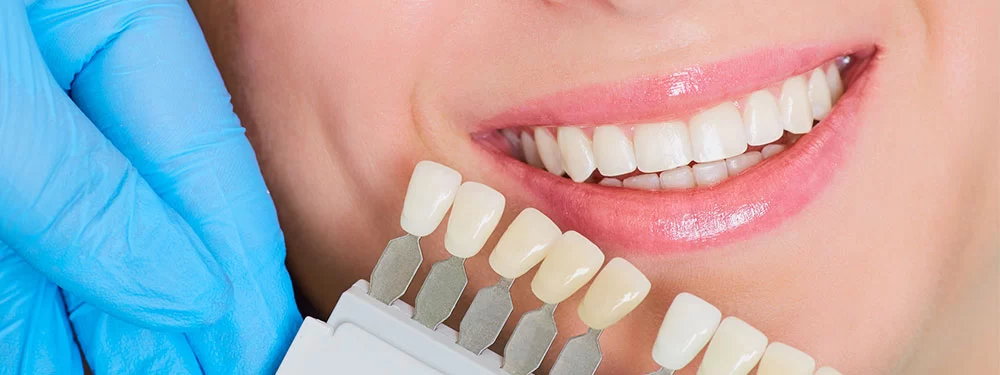
How Long Do Dental Restorations Last? Exploring Durability, Care, and Key Factors
- 1. Longevity of Dental Restorations: What You Need to Know
- 2. Key Factors Affecting the Lifespan of Your Dental Restorations
- 3. Maintenance Tips to Extend the Life of Your Restorations
- 4. Real-Life Case Studies: Understanding Durability in Action
- 5. When Should You Replace Your Dental Restoration?
1. Longevity of Dental Restorations: What You Need to Know
Dental restorations, including crowns, bridges, fillings, and implants, are essential in restoring both the functionality and appearance of your teeth. But how long can you expect these treatments to last? Generally, dental restorations can last anywhere from 5 to 15 years, depending on the material used and the care you provide. For example, porcelain crowns can last between 10 to 15 years, while dental fillings may need to be replaced more frequently.
Understanding the factors that influence the longevity of dental restorations is essential for maintaining their effectiveness and avoiding unexpected costs. In the following sections, we'll dive deeper into the factors that determine the life expectancy of your restorations and how you can extend their durability.
2. Key Factors Affecting the Lifespan of Your Dental Restorations
Several factors influence the lifespan of your dental restorations. Here are the main ones:
- Material Type: Different materials have varying levels of durability. For instance, gold restorations are extremely durable, while resin-based fillings may not last as long.
- Oral Hygiene: Maintaining excellent oral hygiene is crucial for prolonging the life of your restorations. Regular brushing, flossing, and professional cleanings can prevent decay and gum disease.
- Lifestyle Choices: Habits like smoking, excessive alcohol consumption, or chewing hard objects can reduce the lifespan of dental work.
- Wear and Tear: If you grind your teeth (a condition known as bruxism), this can shorten the life of your dental restoration. Night guards are recommended in such cases.
By being mindful of these factors, you can ensure that your dental restorations serve you well for as long as possible.
3. Maintenance Tips to Extend the Life of Your Restorations
Proper care and maintenance are essential for extending the life of your dental restorations. Here are some practical tips:
- Regular Dental Checkups: Visiting your dentist regularly will allow for early detection of any issues with your restorations, such as wear or damage.
- Avoid Hard Foods: Avoid chewing on ice, hard candies, or other tough foods that could damage your dental work.
- Wear a Mouthguard: If you grind your teeth at night, a custom-made mouthguard can protect your restorations from excessive wear.
- Professional Cleanings: Regular cleanings help prevent plaque buildup that can lead to decay and gum disease, both of which can damage your restorations.
By following these simple maintenance steps, you can significantly extend the lifespan of your dental restorations and avoid the need for early replacements.
4. Real-Life Case Studies: Understanding Durability in Action
Let's take a look at a couple of real-life examples to understand how these factors play out:
- Case 1: Sarah, a 45-year-old woman, had porcelain crowns placed 12 years ago. She maintained excellent oral hygiene and avoided biting down on hard foods. Her crowns are still in great shape, demonstrating the positive impact of proper care.
- Case 2: John, a 60-year-old man, had a bridge placed 8 years ago. However, he has a habit of grinding his teeth at night. Despite regular dental visits, the bridge started showing signs of wear. After being fitted with a night guard, his dental work lasted longer.
These cases highlight how lifestyle factors and proper care can influence the longevity of dental restorations.
5. When Should You Replace Your Dental Restoration?
Even with proper care, there may come a time when your dental restoration needs to be replaced. Signs that it’s time to replace your restoration include:
- Visible cracks or chips in the restoration
- Persistent discomfort or pain around the area
- Decay or infection around the restoration
- Frequent loosening or failure of the restoration
Regular visits to your dentist will help you determine the best time for replacement. If you’re experiencing any of these issues, don’t wait—consult your dentist for an evaluation.
If you're looking for high-quality dental restorations that will last, Dentistry Toothtruth offers a wide range of services tailored to your needs. Click here to explore our offerings and get the best dental care possible.







 Ideal Dental Gallatin4.0 (362 review)
Ideal Dental Gallatin4.0 (362 review) Pro Dentists of Buford4.0 (575 review)
Pro Dentists of Buford4.0 (575 review) Reynolds Family Dentistry of Richmond4.0 (19 review)
Reynolds Family Dentistry of Richmond4.0 (19 review) Dr. Samantha L. Greer, DDS, PA3.0 (25 review)
Dr. Samantha L. Greer, DDS, PA3.0 (25 review) Midland Park Family Dentistry5.0 (447 review)
Midland Park Family Dentistry5.0 (447 review) Dentistry At Suburban Square: Michael I. Wollock, DMD4.0 (1228 review)
Dentistry At Suburban Square: Michael I. Wollock, DMD4.0 (1228 review) The Importance of Oral Health Education During Pregnancy for a Healthy Pregnancy
The Importance of Oral Health Education During Pregnancy for a Healthy Pregnancy Best Tips for Brushing Your Teeth Properly for Healthy Gums: Essential Techniques for Oral Health
Best Tips for Brushing Your Teeth Properly for Healthy Gums: Essential Techniques for Oral Health Why Skipping Dental Checkups Can Lead to Bigger Oral Health Problems
Why Skipping Dental Checkups Can Lead to Bigger Oral Health Problems Advantages of Porcelain Dental Restorations
Advantages of Porcelain Dental Restorations How Can Diabetes Cause Tooth and Gum Problems? Preventing and Managing Oral Health Issues
How Can Diabetes Cause Tooth and Gum Problems? Preventing and Managing Oral Health Issues Healthy Habits for Promoting Good Oral Health and Hygiene: Tips for a Healthy Smile
Healthy Habits for Promoting Good Oral Health and Hygiene: Tips for a Healthy Smile